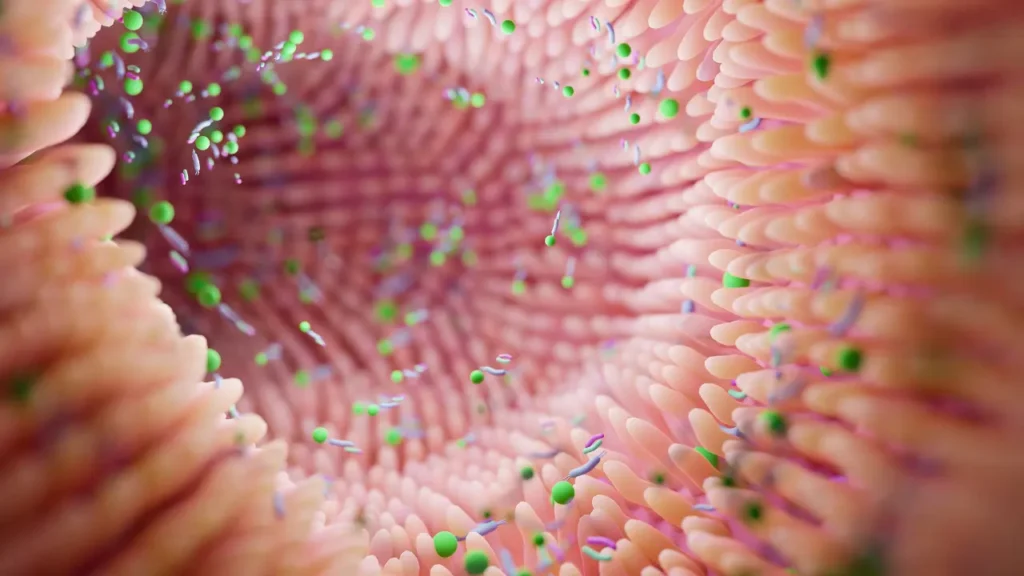Beeswax, a naturally occurring material released by honeybees (apis mellifera) and used to build honeycomb, has attracted a lot of interest recently due to its conceivable nutritional and health benefits. This waxy material has historically been used in a variety of forms and applications, from the production of candles to the creation of cosmetic formulas. It is made up of a complex mixture of esters, hydrocarbons, and free fatty acids. This article’s goals are to examine the properties of beeswax, clarify its health advantages, and offer recommendations for the best dosage, unwanted effects, and responsible use.
You May Also Like:
Nordic Naturals Omega-3 Phospholipids: Evaluation of a Leading Brain Health Product
Beeswax: Benefits, Dosage, Side Effects, Drug Interactions, And Other Important Information is an original (NootropicsPlanet) article.
Nature of Beeswax
Esters of long-chain fatty acids and monohydric alcohols make up the majority of beeswax. Myricyl palmitate, myricyl cerotate, and myricyl myristate are the principal components of beeswax. In addition, n-alkanes, olefins, and branched-chain alkanes are among the hydrocarbons found in beeswax. Free fatty acids and minute quantities of other substances, such as sterols, phenols, and flavonoids, also contribute to its special qualities and potential health advantages.
Health Benefits of Beeswax
The free fatty acid and phenolic components of beeswax have been shown to have strong anti-inflammatory and antibacterial benefits. Beeswax can stop the growth of a variety of bacterial strains, including staphylococcus aureus and escherichia coli, as well as fungi like candida albicans, according to studies (Garedew et al., 2004). The control of skin infections, the speed of wound healing, and the use of its antibacterial activity as a natural preservative in cosmetic formulations may all benefit from it.
Skin Care
Due to its ability to retain moisture, increase skin suppleness, and act as a barrier against external stresses, beeswax has long been used as an emollient in skincare products. Beeswax can improve skin hydration and promote general skin health by reducing trans-epidermal water loss, according to research (Bielfeldt et al., 2009). Beeswax is a great ingredient for those with sensitive skin because it has anti-inflammatory and antibacterial properties that can lessen skin irritation and redness.
Digestive Health
Beeswax may have potential uses in supporting digestive health, according to recent studies. According to animal research, beeswax inhibits the generation of stomach acid and increases the development of protective gastric mucus, which helps to prevent gastric ulcers (Al-Said et al., 2017). Beeswax has also been demonstrated to have pre-biotic characteristics, which support the development of advantageous gut bacteria and preserve a balanced gut microbiota (Zhao et al., 2018).

Chemistry of Beeswax
Exploring beeswax’s chemical makeup in order to better understand its qualities and health advantages is very important. The main components of beeswax include a complex blend of esters, hydrocarbons, and free fatty acids.
Esters make up the majority of beeswax, accounting for about 70% of its total weight. Myricyl palmitate (C15H31COO-C30H61), myricyl cerotate (C26H53COO-C30H61), and myricyl myristate (C14H29COO-C30H61) are the three primary esters found in beeswax. Long-chain fatty acids, such as palmitic, cerotic, and myristic acids, and long-chain monohydric alcohols, such as myricyl alcohol, are esterified to create these esters. The high melting point, poor solubility, and distinctive hardness of beeswax are all influenced by the esters.
About 14% of beeswax is made up of hydrocarbons, which comprise branched-chain alkanes, unsaturated olefins, and linear (n-alkanes) alkanes. Hentriacontane (C31H64), nonacosane (C29H60), and heptacosane (C27H56) are typical hydrocarbons discovered in beeswax. These hydrocarbons help beeswax retain its ability to repel water.
About 12% of beeswax is made up of free fatty acids, mainly palmitic, cerotic, and meristic acids. These unrestricted fatty acids help beeswax’s antibacterial and anti-inflammatory abilities. In addition to these primary components, beeswax also includes trace amounts of other substances that may also contribute to its health-promoting properties. These substances include sterols, phenols, and flavonoids.
Physiological Properties of Beeswax
Examining the physiological properties of beeswax in the body and brain is crucial for understanding the health advantages of this substance. Current study sheds light on how some of the chemical components of beeswax can contribute to its health-promoting effects, even though the precise mechanisms are not yet fully known.
Inflammation-Reducing Mechanism
Due to the fact that beeswax contains free fatty acids including palmitic, cerotic, and myristic acids, beeswax has many anti-inflammatory properties. Inflammation can be decreased by these fatty acids by modulating the production of pro-inflammatory cytokines including tumor necrosis factor-alpha (TNF-alpha) and interleukin-6 (IL-6) (Ghisalberti, 1979). Additionally, cyclooxygenase (COX) and lipoxygenase (LOX) enzymes, which are important in the inflammatory response, have been demonstrated to be inhibited by the phenolic chemicals found in beeswax, such as flavonoids (Kurek-Górecka et al., 2013).
Microbiological Mechanism
The free fatty acid and phenolic components of beeswax are primarily responsible for its antibacterial properties. According to Garedew et al. (2004), these components can damage the bacterial cell wall and change the permeability of cell membranes, which can result in cell lysis and death. Beeswax’s phenolic compounds can also obstruct bacteria’s ability to communicate via quorum sensing, which controls the expression of virulence factors and the development of bio-films (Tang et al., 2011).
Skin Barrier Mechanism and Function
By supporting barrier function, which is crucial for preserving skin hydration and shielding the skin from external stresses, beeswax supports skin health. According to Bielfeldt et al. (2009), the esters and hydrocarbons in beeswax create a semi-occlusive coating on the skin’s surface that prevents moisture loss through trans-epidermal sweating. Additionally, this coating acts as a barrier against germs, allergies, and irritants.
Gastrointestinal Health
Beeswax has a number of potential benefits for digestive health. Irritable bowel syndrome (IBS) and inflammatory bowel disease (IBD) symptoms may be lessened by its anti-inflammatory properties, which can help reduce inflammation in the gastrointestinal system (Ghisalberti, 1979). Beeswax has also been demonstrated to protect the gastric mucosa by reducing the generation of stomach acid and increasing the production of gastric mucus (Al-Said et al., 2017). Beeswax’s pre-biotic qualities, which encourage the development of good gut bacteria, can also help to maintain a healthy gut microbiota, which is essential for gastrointestinal health in general (Zhao et al., 2018).

Optimal Dosage of Beeswax
The best amount of beeswax to take as a nutritional supplement depends on your body’s overall health, and what exactly your desired health outcomes are. Beeswax is often regarded as safe for consumption in moderation. According to research, animal models can tolerate up to 1 g of beeswax per kilogram of body weight each day (Nohynek et al., 1993). However, due to the scarcity of human clinical research, it is advised to speak with a doctor before including beeswax in your diet.
Side Effects of Beeswax
Beeswax is generally regarded as harmless when taken in moderation, however some people can have negative reactions. Although allergic reactions to beeswax are uncommon, they can happen in those who have a history of pollen or bee allergies. An allergic reaction can cause a skin rash, itching, swelling, or breathing problems. You should stop using the drug right away and get medical help if any of these symptoms appear.
Beeswax can upset your stomach and produce cramps, diarrhea, and bloating if you consume a lot of it. Before using beeswax as a dietary supplement, it is essential to follow the dosage recommendations and seek medical advice.
Potential Substance Interactions with Beeswax
There is currently a dearth of information on possible drug interactions with beeswax. Beeswax could potentially interact with fat-soluble drugs or supplements, including some statins, fat-soluble vitamins (A, D, E, and K), and oral contraceptives, due to its lipid content. If you are on any of these prescription drugs or dietary supplements, it is imperative to speak with a healthcare provider before using beeswax.

Responsible Use of Beeswax as a Nutritional Supplement
It is crucial to keep in mind the following recommendations to ensure that beeswax is used responsibly as a dietary supplement:
- Quality: Be sure to choose unrefined, premium beeswax from reliable suppliers. Beeswax that has been refined can include compounds left over from the refining process, which might negate any health benefits.
- Dosage: Before adding beeswax to your diet, follow all of the dosage recommendations and speak with a medical expert.
- Allergy and Medical History: Be aware of any personal or family history of allergies to pollen or bees, and let your doctor know if you have any underlying illnesses or are currently taking any medications.
Beeswax:
Conclusion
The physicochemical features of beeswax and its numerous uses in the culinary, cosmetic, and pharmaceutical industries are immemsely due to its distinctive chemistry, which includes a blend of esters, hydrocarbons, and free fatty acids. Additionally, the inclusion of bio-active substances like phenols and flavonoids increases its potential health advantages. While all of these benefits are great for our health, everybody’s body reacts differently, and it is important to talk to your doctor first before starting any new supplement.

References:
- Propolis: A Review. Bee World, 60(2), 59-84. Retrieved from: https://www.tandfonline.com/doi/abs/10.1080/0005772X.1979.11097738
- Structure and antioxidant activity of polyphenols derived from propolis. Molecules, 19(1), 78-101. Retrieved from: https://www.mdpi.com/1420-3049/19/1/78
- The therapeutic effect of chlorogenic acid against Staphylococcus aureus infection through sortase A inhibition. Frontiers in Microbiology, 2, 188. Retrieved from: https://www.frontiersin.org/articles/10.3389/fmicb.2011.00188/full
Important Note: The information contained in this article is for general informational purposes only, and should not be construed as health or medical advice, nor is it intended to diagnose, prevent, treat, or cure any disease or health condition. Before embarking on any diet, fitness regimen, or program of nutritional supplementation, it is advisable to consult your healthcare professional in order to determine its safety and probable efficacy in terms of your individual state of health.
Regarding Nutritional Supplements Or Other Non-Prescription Health Products: If any nutritional supplements or other non-prescription health products are mentioned in the foregoing article, any claims or statements made about them have not been evaluated by the U.S. Food and Drug Administration, and such nutritional supplements or other health products are not intended to diagnose, treat, cure, or prevent any disease.


